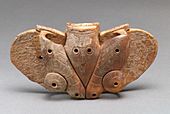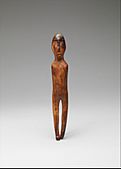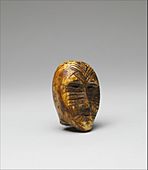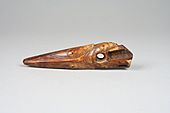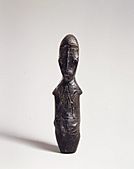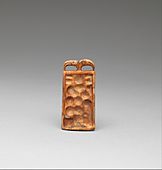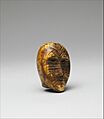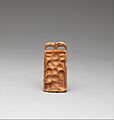Old Bering Sea facts for kids
Old Bering Sea is the name of an ancient culture that lived around the Bering Strait region. This area is between what is now Alaska and Russia. People of the Old Bering Sea culture lived very close to the ocean, usually less than 1 kilometer away.
This culture is known for its special and beautiful art style, which often used circles and dots. Experts believe the Old Bering Sea culture existed from about 400 BC to 1300 AD, or possibly from 200 BC to 500 AD. It is seen as the first part of a larger group of cultures called the Northern Maritime tradition.
Contents
Discovering the Old Bering Sea Culture
The Old Bering Sea culture was first identified by a Canadian archaeologist named Diamond Jenness in 1928. He found unique decorated items, like harpoon heads used for hunting whales and seals, on the Diomede Islands.
Later, an archaeologist from the Smithsonian Institution named Henry B. Collins added the word "Old" to the name. This helped to tell it apart from newer cultures that had similar art. Between 1925 and 1940, many more discoveries were made, mostly on St. Lawrence Island. These finds included amazing carved objects, especially "winged objects" that were used as weights on atlatls (throwing boards).
Amazing Art and Tools
The people of the Old Bering Sea culture were very skilled artists. They carved beautiful designs onto almost everything, especially objects made from walrus tusks. These carvings often had special colors and showed their age.
They decorated many different kinds of items. Many of these objects have been found in graves, with some graves holding dozens of carved pieces. These items give us clues about their daily lives and beliefs.
Where the Culture Lived
The Old Bering Sea culture was mostly found in the area of Chukotka, which is in modern-day Russia. The largest number of graves, over 500, were found near Cape Dezhneva at two sites called Uelen and Ekven.
Old Bering Sea sites are also common along the coasts of St. Lawrence Island and the Diomede Islands. However, only a few items have been found on the mainland of North America, in places like Barrow, Point Hope, Cape Espenberg, and Golovnin Bay.
How the Culture Developed
Henry Collins, the archaeologist, studied the different styles of Old Bering Sea art. He found that the art changed over time. He formally described these different styles in 1937 after digging at sites near Gambell, Alaska, on St. Lawrence Island.
One important early style of Old Bering Sea art is called Okvik. This style has simpler designs. It was named after sites on an island off the east coast of St. Lawrence Island. A small Okvik site, called Hillside, has five stone slab houses that date back to about 200 to 400 AD.
Important Dig Sites
The places where Old Bering Sea objects are found are usually large mounds or middens (ancient trash heaps), or cemeteries with many graves. These graves were often framed by large whale jawbones and had wooden planks on the floor, made from driftwood.
Not all graves had many valuable items. The few graves that did have many offerings suggest that some people in the Old Bering Sea society were very important. These might have been powerful whaling captains or shamans (spiritual leaders), and some of these leaders were women.
Where Did They Come From?
The exact beginnings of the Old Bering Sea culture are still a bit of a mystery. However, we know that the earliest items from this culture date back to before 400 BC, found in graves at Ekven.
The culture was at its strongest between 200 and 600 AD. After this, the Old Bering Sea culture is thought to have developed into other cultures. In Siberia, it led to the Punuk culture, and in northern Alaska, it led to the Birnirk culture. The Old Bering Sea culture is also seen as the earliest sign of the Thule culture, who were ancestors of today's Inuit people.
Images for kids
-
Winged object (harpoon counterweight?); 2nd–3rd century; ivory (walrus); Metropolitan Museum of Art (New York City)


